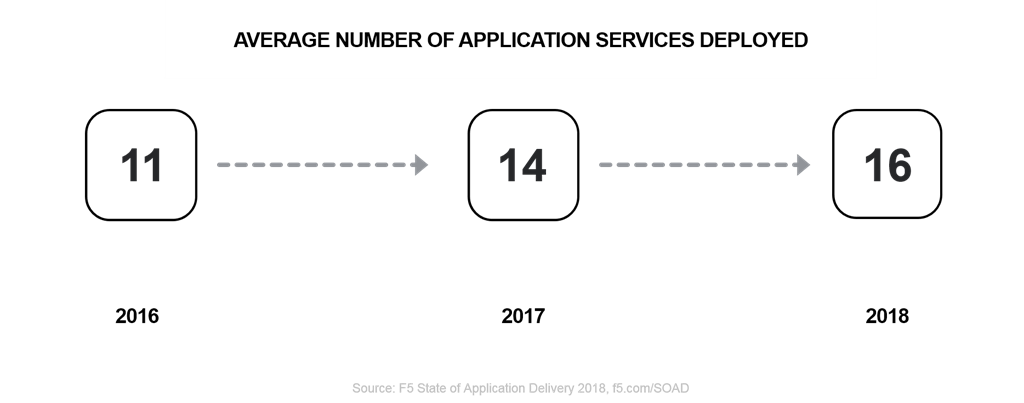クラウドのリーダーと後進者: applicationサービスがすべてです
時々、私は El Reg の IT とテクノロジーに関する解説を読むのが好きです。 適度な噛みつきで吠えられるので、その吠え声は的を射ていることが多いです。
しかし、時には、彼らの辛辣なコメントが的外れになることもある。 今年の夏の初めにクラウドについて「クラウドは6社による競争であり、そのうち3社は周回遅れになっている」と批判し、最新のガートナーMQの結果を嘆いた。 最新の分析では、市場の要件に基づいて複数のクラウド プロバイダーが除外されました。 この場合、少なくとも「ガートナーの魔術師」が絶対に正しいという事実にもかかわらず、これはエル・レグからのかなり痛烈な反応につながりました。
「現在、顧客はクラウド IaaS プロバイダーに対して高い期待を抱いています。 「彼らは、市場をリードする技術的能力、つまり、機能の奥深さと幅広さ、そして高い可用性、パフォーマンス、セキュリティを求めています」とガートナーの魔術師たちは書いている。 「顧客は、ハードウェア インフラストラクチャ機能だけでなく、管理機能、開発者サービス、完全に統合された PaaS 機能を含むクラウド ソフトウェア インフラストラクチャ サービスも期待しています。」
最新の MQ では 8 つの異なる IaaS プロバイダーが除外され、AWS と Azure がリーダーとして君臨し、Google がそれに続き、Alibaba Cloud、Oracle、IBM がニッチ プレーヤーとして位置付けられました。 挑戦者はいません。 先見の明のある人はいない。 ただのリーダーであり、いや、リーダーではない。
私が腹を立てたのは、ガートナーの分析ではありませんでした。 El Reg は自社の基準を無視し、さまざまな名前で呼ばれるものに大きく依存していましたが、開発者サービスや統合機能とともに、部分的には「applicationサービス」として要約できます。
ああ、大変! 企業が、エンタープライズのような機能と性能を提供する IaaS プロバイダーを要求し、選択しているとは誰が想像したでしょうか。 それは考えられない!
ここで少し 2013 年に戻り、クラウド プロバイダーが「何を間違えていたか」を詳述した記事によって刺激された議論について考えてみましょう。 彼らが間違っていたことの 1 つ (そして一部は今も間違っています) は、applicationサービスと統合を通じて差別化を図れなかったことです。
2013 年の私の長文記事より:
IaaS の差別化は、インスタンスのサイズや構成の多様化や価格競争によって実現されるものではありません。 企業顧客はサービスの価値(ビジネス価値と運用価値)を理解しており、価格は決定要因というよりは、全体的な方程式における単なるもう 1 つの要素にすぎません。 ハイブリッド クラウドの構築をより容易かつ迅速にし、サービスの安定性における信頼性を高める事前統合サービスによって提供される価値は、「安価であるかどうか」よりも重要です。
applicationサービスと統合サービス (たとえば、 AWS Rulesや、迅速かつ簡単なログ記録統合など) が、今日のクラウド プロバイダの成功と失敗を左右します。
今日のapplication配信はapplicationサービスに関するものである
エンタープライズapplicationをクラウドに移行する場合、単にアプリケーションを移行するわけではありません。アーキテクチャを移行することになります。 多数の (平均 16 個) 異なるサービスから構成されるアーキテクチャ。 これらのサービスの一部は、ターゲット クラウドにネイティブなapplicationサービスに置き換えることができます (また、置き換える必要があります)。 明らかなのは、企業ネットワークで「共有」されるサービスは、クラウド プロバイダによって提供されるのが最適だということです。 これは主にネットワークとアプリケーション インフラストラクチャですが、ログ記録も含まれます。

その他のapplicationサービスは、ポリシーのコンプライアンスと一貫性を維持するために移行できます (また、移行する必要があります)。特に、企業のセキュリティ要件に合わせてアプリごとに手動で作成されたポリシーが対象となります。 Webapplicationファイアウォールポリシーはアプリ固有であることがよく知られており、オンプレミスからクラウドに移行する可能性が最も高くなります。 ポリシー管理への投資だけでも、移行作業の価値があります。
いずれにせよ、このプラクティスでは、ターゲット クラウドに同様のapplicationサービス (および統合) が存在することが前提となります。 あるいは、オンプレミスで使用されているapplicationサービスを、過度のオーバーヘッドを発生させることなくクラウドに移行できることも重要です。
applicationサービスに対するこの組み合わせとアラカルトのアプローチは、アプリごとのapplicationサービスが増加している理由の 1 つです。 クラウドは企業の成長の持続を必要としており、コストはかつてのような推進力ではないからです。 統合とapplicationサービスによる差別化は、クラウド プロバイダーが企業を引き付け、維持する方法です。
しかし、すべての人材を提供するつもりはなく、組織が雇用する人材の平均数は増加し続けています。 つまり、組織は従来のデータセンターのモノリシックな配信アーキテクチャを分割し、可用性を維持し、パフォーマンスを向上させ、安全な環境を維持するために必要なapplicationサービスを選択するプラグ アンド プレイ アプローチを可能にするアプリごとのモデルを採用する必要があります。
残念ながら、エル・レグは近視眼的にこの点を見逃しました。 この分析は的確であり、企業の差別化に対する需要を何となく認識しているだけです。 ある時点でコストはこれ以上下がらなくなり、クラウドプロバイダーは顧客を引き付けるための新しい方法を見つけざるを得なくなるだろうというのは、確実な賭けでした。 applicationサービスは常に、プロバイダーが差別化を図るための最善の選択肢でした。
